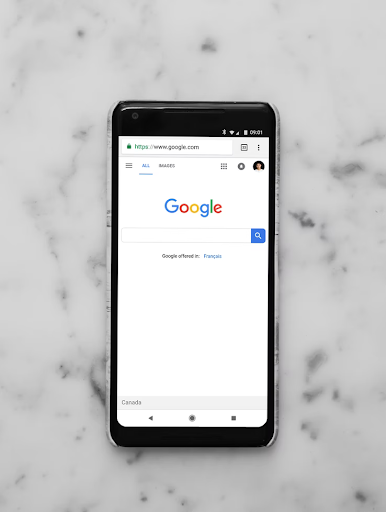|
Ecommerce is the business of selling products online. Operating an ecommerce store is a great way for you to help people get the products they need efficiently — and make a lot of money in the process.  If you’re thinking about starting an ecommerce store, you likely already have an idea of what you want to sell. But not all stores are the same. What you sell and who you sell to determines which category, or ecommerce business model, your store falls under. Your ecommerce store category actually has a significant impact on many aspects of your business, from your advertising strategy to the management of product inventory. So, which category do you fall into? Let’s find out. The three types of ecommerce storesThere are three general categories, or types, of ecommerce stores:
Below, we define each of these categories, and discuss their pros and cons. By the end, you’ll have a better sense of which type of ecommerce store you should start based on your goals. Business-to-business (B2B)Simply put, B2B ecommerce can be equated to selling wholesale online. Likewise, if you are a service-based business, it would be selling your services to businesses rather than the end consumer. What exactly does this mean? It means you’re selling products to other businesses. The B2B category of ecommerce is expanding at a faster rate than that of any other category — a growth trend that is projected to continue until 2025. So what distinguishes B2B from the other two types of ecommerce?  While B2C companies try to appeal to the more emotional, and typically spontaneous consumer behavior, B2B companies to business in in a much more deliberate world. Because their customers are other businesses, purchasing decisions are driven more by rational analysis, rather than emotion. When starting a B2B ecommerce store. You’ll want to account for the more rational and less emotional types of purchasing behaviors when creating your marketing outreach plan. With that in mind, we an assume that blanket ad campaigns with the goal of persuading consumers to make impulsive buying decisions will not be effective in the B2B world. As a B2B ecommerce store owner, view yourself as a consultant, of sorts, to other businesses. Your role should be to consult and support the goals of businesses that would use you as a supplier. In that way, relationship-building is the lifeblood of B2B ecommerce. Another signature aspect of B2B ecommerce is that its products are almost always higher-ticket items than those of B2C companies. Unlike B2C companies, B2B stores supply other retailers with inventory. Those retailers almost always buy wholesale and typically in large quantities to fulfill weekly or monthly forecasts. As a result, B2B ecommerce stores can expect orders for larger shipments and higher order value. Business-to-consumer (B2C)When most people think of ecommerce, a majority of the time, B2C companies will come to mind. This type of ecommerce company are primarily retailers that sell products to the end consumers, rather than another business.. B2C sales are typically driven by consumer desires meaning that their marketing strategies aim to convince shoppers to identify with their brand. This allows B2C companies to cast a wide advertising net. By doing this, B2C companies can capitalize on the emotional and spontaneous buying behaviors of individual consumers.  While B2C advertising is not concerned with building long-term customer relationships, it still needs to be impactful enough that customers remember it and keep coming back. At its core, B2C advertising’s primary focus is on the point-of-sale — enticing potential customers to “add to cart” and purchase products, right now. To reiterate, if B2B sellers are long-term partners with their customers, B2C companies are more focused on singular interactions - individual sales. This makes advertising the lifeblood of the B2C ecommerce model.  Platforms that advertise products directly to high-intent shoppers, like Google Shopping, is built around servicing B2C business models. This is a traditional approach to retail but with the ability to market to a targeted online audience with razor-sharp precision. Another distinction between B2C and B2B is pricing and negotiation. With B2C companies, the customer price is what it is. Consumers either purchase it or they don’t. There’s no negotiation involved. You wouldn’t go to the website of J.Crew, for example, and try to haggle for a better deal on a crew neck sweater. For B2B companies, business relationships are longer-term, bulkier, and oftentimes contractual, providing opportunities to negotiate pricing or other contractual terms. Direct-to-consumer (DTC) According to some, a direct-to-consumer business model could rightfully be classified as a sub-category of B2C. But there are some important distinctions between the two. Foremost among them, DTC businesses are a one-stop-shop: they produce and sell their own products without involving a middleman. B2C companies, on the other hand, are middlemen by definition — they are retailers. This means they have B2B suppliers that provide their inventory, which they then sell to consumers for a profit. One major advantage of being a DTC ecommerce store owner is that you can set your prices lower and attract more customers all without affecting your profit margins. B2C retailers need to make a profit on items they’re buying from suppliers, meaning that they’ll often need to set their prices relatively higher. Here’s an example to illustrate how DTC is distinct from B2C: Let’s say you have a skill making a certain physical product. You learn about ecommerce website development and start selling your product directly to shoppers online. You are now a DTC online business. Again, with the DTC business model, you own everything about your brand: the manufacturing process, the products, the customer database, and the interactions with shoppers to name a few. An example of a home-run DTC business is Glossier, the popular beauty brand that was born on Instagram in 2014 and has since been lauded by Vogue for its “revolutionary” customer engagement. Warby Parker, the company that changed the game for how we buy glasses online, also mastered the DTC model early on. Some say that, with the rise of the 21st-century brand economy, the writing is on the wall: DTC is the future. Those are the fundamental differences between the three types of ecommerce business models. While it should be more clear which category your business falls into, one key thing to remember is this: Your advertising strategy needs to match your business model. Don’t try to market a B2B company like a B2C company - you won’t see the results you are hoping for. Frequently Asked Questions | FAQHow does the operational structure differ between B2B, B2C, and DTC ecommerce models in terms of inventory management and supply chain logistics?
Answer: The operational structure varies significantly between B2B, B2C, and DTC ecommerce models, particularly in terms of inventory management and supply chain logistics. In B2B ecommerce, the focus lies on catering to the needs of other businesses, often involving bulk orders and long-term partnerships. This necessitates efficient inventory management systems capable of handling large quantities of products. B2C ecommerce, on the other hand, revolves around direct sales to individual consumers, requiring strategies to manage fluctuating demand and ensure timely fulfillment of orders. DTC ecommerce operates as a one-stop-shop, with businesses manufacturing and selling their own products without involving middlemen. This model offers more control over inventory and pricing, allowing for greater flexibility in supply chain management.
Are there specific challenges unique to each ecommerce category, such as customer acquisition costs, brand loyalty, or regulatory compliance?
Answer: Each ecommerce category presents its own set of challenges that businesses must navigate. For B2B ecommerce, challenges may include acquiring and retaining business clients, negotiating pricing and contractual terms, and maintaining long-term relationships with customers. B2C ecommerce faces issues such as high customer acquisition costs, fostering brand loyalty in a competitive market, and ensuring compliance with consumer protection regulations. DTC businesses grapple with establishing brand recognition and trust without the backing of traditional retail channels, managing production costs to maintain competitive pricing, and building direct relationships with consumers to drive sales and repeat purchases.
Can a business transition between different ecommerce categories as it evolves, and if so, what are the common strategies or considerations for such a transition?
Answer: Yes, businesses can transition between different ecommerce categories as they evolve and adapt to changing market dynamics. Such transitions require careful planning and consideration of various factors, including target audience, product offerings, marketing strategies, and operational capabilities. For example, a company may start as a B2C retailer but decide to vertically integrate its operations and transition to a DTC model to gain more control over its brand and profit margins. Conversely, a B2B supplier may identify opportunities to reach end consumers directly and shift towards a DTC approach. Regardless of the direction of the transition, businesses must assess the feasibility, risks, and potential benefits involved, and adjust their strategies accordingly to succeed in their new ecommerce category. Got a bright idea or need help matching your marketing to your business model? Partner with Kliken and take your ecommerce business to the next level And whether you’re just starting out or you want to take your existing ecommerce business to the next level, Kliken is here to help. We make the process of syncing your store with the Google Shopping & Ads platforms seamless. So you can start running Google Ads campaigns almost immediately — while we deal with the onboarding headaches. There are many options in the world of ecommerce. Regardless of your individual goals, Google Shopping & Ads powered by Kliken can help you meet them. As the world’s #1 Shopping and Ads marketing platform, Kliken has helped over 1,000,000 small businesses worldwide grow their sales on Google and get a return of up to 7x their original ad spend. Its proven marketing solutions can help you to unleash the potential of your ecommerce business. Learn more about how customers use Kliken to grow their businesses online here. Michael ArnoldMichael is a freelancer from New York City. When he isn’t writing about how Kliken unleashes the marketing, you can find him reading, writing for pleasure, or traveling the globe.
0 Comments
Your comment will be posted after it is approved.
Leave a Reply. |





